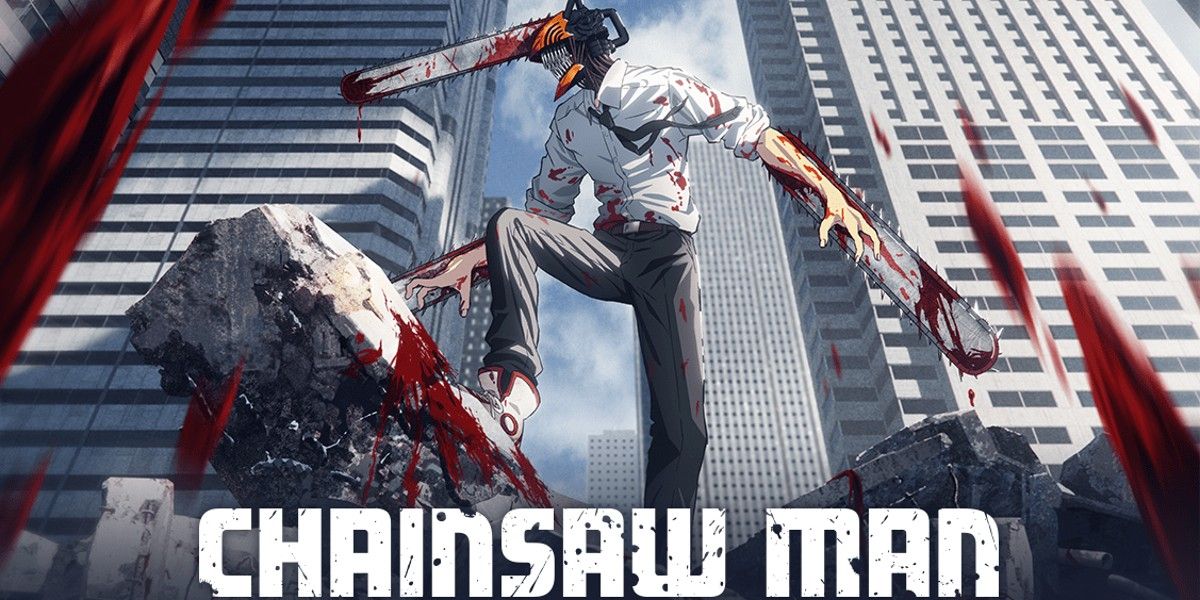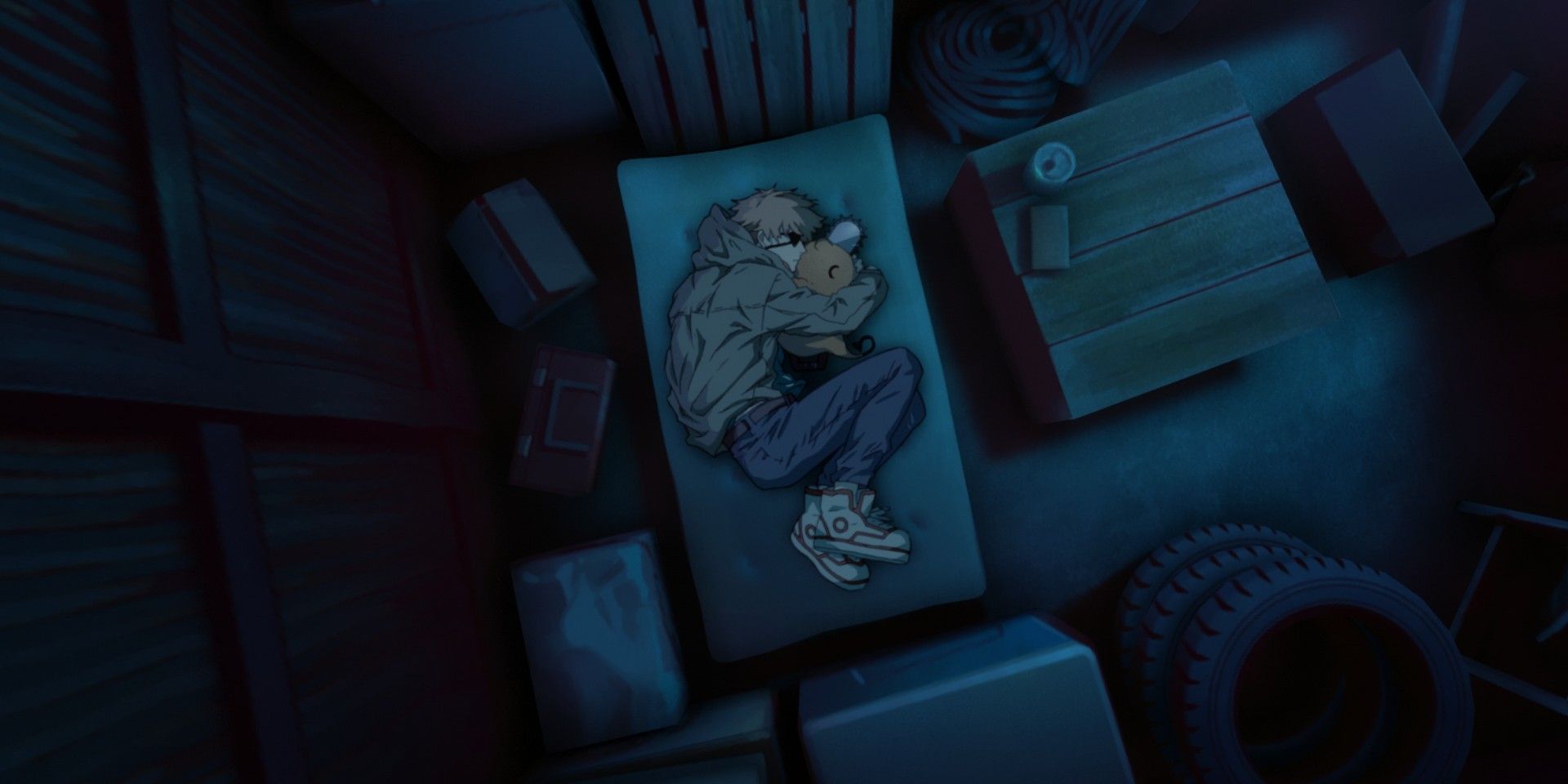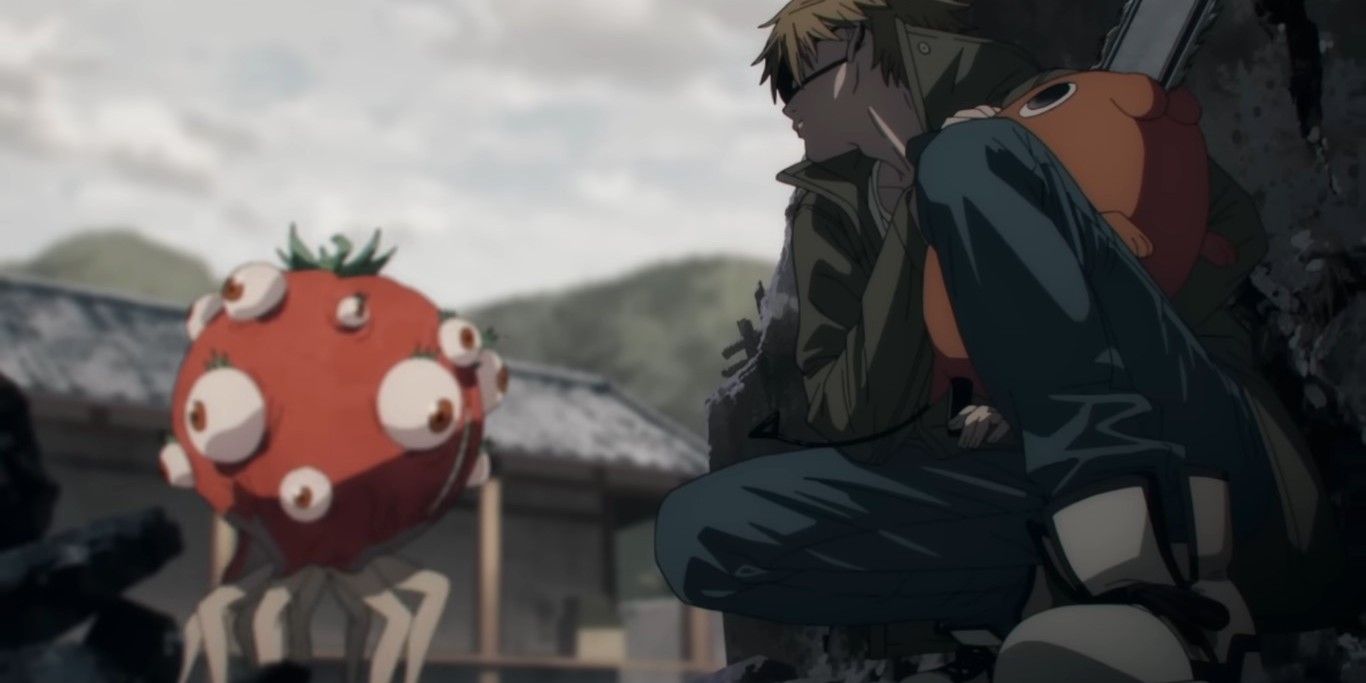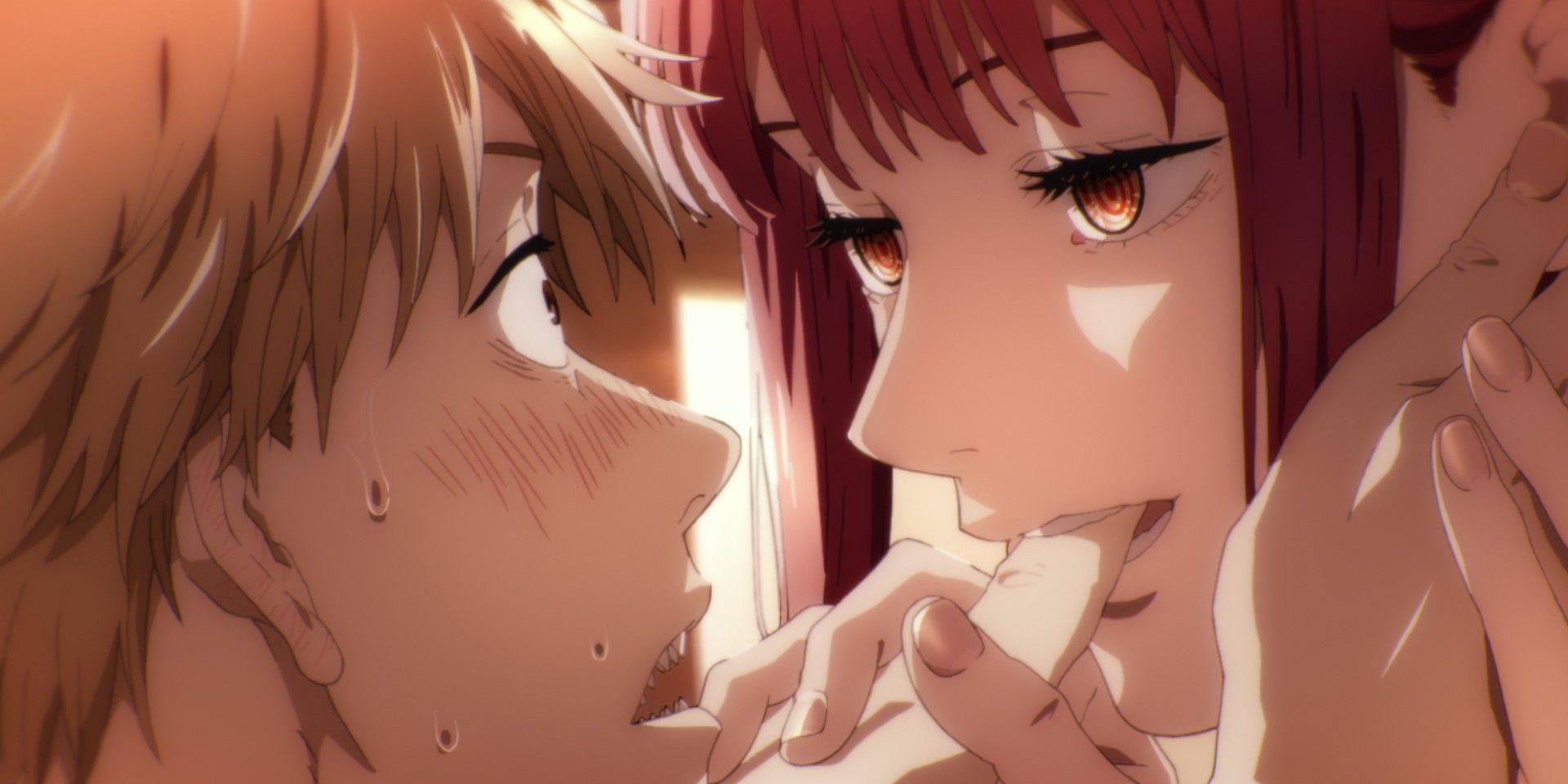Anime is not just for kids, something fans of the genre have known since its very conception. The long-awaited first episode of Chainsaw Man, an adaptation of Shueisha's dark action manga of the same name, proves that some anime are made for grown-ups. Breaking shonen conventions with its graphic and bloody violence, this pilot soars by providing both heartfelt and heart-wrenching moments within a dreary and inhospitable setting to explore what it means to either simply survive or to truly live.
Chainsaw Man tells the story of Denji, a destitute young man living in squalor due to the debt left behind by his late father. In order to keep living, even by the barest of standards, Denji kills horrifying abominations known as devils for the mafia. Accompanying him through life and acting as both his partner and weapon in this task is his pet Pochita, an adorable dog-like devil with a chainsaw for a face. However, after a terrible incident takes Denji's life, Pochita fuses with him to become an unstoppable devil-human hybrid -- a "Chainsaw Man."
Though this premise may sound bizarre on paper, the show pulls viewers into its world and ideas naturally without any hand-holding. Rather than opening with a lengthy expository scene on the nature and origin of devils, the series presents these creatures as hard facts and expects its audience to accept them. In doing so, it takes a show-don't-tell approach to worldbuilding that is not always the standard when it comes to shonen anime, forcing those watching to suspend their belief and embrace the devils for the visceral monstrosities that they are.
As Chainsaw Man intentionally leaves out this convoluted explanation, it uses its runtime to tell a deeply human story despite its fantastical yet grim backdrop. Denji's plight is one that only a certain percentage of people experience in life but is still immediately understandable. When he is shown living in a dilapidated shack, sharing a single piece of bread for dinner with his beloved Pochita, it is easy to understand just how much of a victim he has become and why he must resort to selling himself to crime lords to survive. This is an immediately identifiable struggle, but it is rarely depicted in such detail in media as the origin of a heroic character.
While the anime does a superb job of conveying this through its narrative, these ideas are most clearly expressed in its stunning visual and sound direction. The vast majority of this first episode drips with a cold and foreboding atmosphere, using shadows, coloration, and expertly utilized silence to make Denji's desolate and dismal circumstance real through sensory storytelling. The application of these shrewd lighting choices pays off big time when Denji, finally free of the indentured servitude that enslaved him for so long, faces a mysterious woman who offers him a chance to escape into the hope of a bright future.
Similarly, when Denji changes into his hybrid form for the first time, the sounds of his chainsaws ripping through those that would wish him dead provides an unbridled cacophony of blood. This would usually be reserved for villains in a splatter flick, but here it finds a home in a manipulated youth dismantling the system in the most punk-rock way possible. It is in this scene, in particular, that the show's impressive CGI animation takes the spotlight.
The particulars of Chainsaw Man's character models are designed to replicate more traditional hand-drawn works while still having a noticeable curvature to them. This creates an uncanny depth to the nightmarish devils caught up in breakneck fight scenes. Admittedly, the technique does result in some unnatural fluidity during more mundane scenes of characters walking down the street, but the animators' attention to detail more than makes up for these minute instances of awkward motion. Notably, there are a few seconds of a zoomed-in eyeball with what may be the most realistically-drawn blood vessels in anime history.
All said, Chainsaw Man's unorthodox pilot makes a bold departure from many of its contemporaries. Star Toya Kikunosuke, despite an extremely limited history in the industry, captures the brashness of Denji's demeanor perfectly. This series certainly is not for the faint of heart, as it is not afraid to let the entrails fly. However, for those who can stomach its carnage, they will find something that speaks to their souls and senses in a way that only animation can deliver.
Crunchyroll will simulcast Chainsaw Man, which premiers in Japan on Oct. 11.




